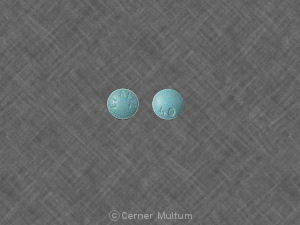Elavil Dosage
Generic name: AMITRIPTYLINE HYDROCHLORIDE 25mg
Dosage form: tablet
Drug class: Tricyclic antidepressants
Medically reviewed by Drugs.com. Last updated on Apr 3, 2024.
Dosage should be initiated at a low level and increased gradually, noting carefully the clinical response and any evidence of intolerance.
Initial Dosage for Adults:
For outpatients 75 mg of amitriptyline HCl a day in divided doses is usually satisfactory. If necessary, this may be increased to a total of 150 mg per day. Increases are made preferably in the late afternoon and/or bedtime doses. A sedative effect may be apparent before the antidepressant effect is noted, but an adequate therapeutic effect may take as long as 30 days to develop.
An alternate method of initiating therapy in outpatients is to begin with 50 to 100 mg amitriptyline HCl at bedtime. This may be increased by 25 or 50 mg as necessary in the bedtime dose to a total of 150 mg per day.
Hospitalized patients may require 100 mg a day initially. This can be increased gradually to 200 mg a day if necessary. A small number of hospitalized patients may need as much as 300 mg a day.
Adolescent and Elderly Patients:
In general, lower dosages are recommended for these patients. Ten mg 3 times a day with 20 mg at bedtime may be satisfactory in adolescent and elderly patients who do not tolerate higher dosages.
Maintenance:
The usual maintenance dosage of amitriptyline HCl is 50 to 100 mg per day. In some patients 40 mg per day is sufficient. For maintenance therapy the total daily dosage may be given in a single dose preferably at bedtime. When satisfactory improvement has been reached, dosage should be reduced to the lowest amount that will maintain relief of symptoms. It is appropriate to continue maintenance therapy 3 months or longer to lessen the possibility of relapse.
Usage in Pediatric Patients
In view of the lack of experience with the use of this drug in pediatric patients, it is not recommended at the present time for patients under 12 years of age.
Plasma Levels
Because of the wide variation in the absorption and distribution of tricyclic antidepressants in body fluids, it is difficult to directly correlate plasma levels and therapeutic effect. However, determination of plasma levels may be useful in identifying patients who appear to have toxic effects and may have excessively high levels, or those in whom lack of absorption or noncompliance is suspected. Because of increased intestinal transit time and decreased hepatic metabolism in elderly patients, plasma levels are generally higher for a given oral dose of amitriptyline hydrochloride than in younger patients.
Elderly patients should be monitored carefully and quantitative serum levels obtained as clinically appropriate. Adjustment in dosage should be made according to the patient's clinical response and not on the basis of plasma levels.**
Frequently asked questions
More about Elavil (amitriptyline)
- Check interactions
- Compare alternatives
- Reviews (203)
- Drug images
- Side effects
- During pregnancy
- Support group
- Drug class: tricyclic antidepressants
- Breastfeeding
Patient resources
Other brands
Professional resources
Related treatment guides
Further information
Always consult your healthcare provider to ensure the information displayed on this page applies to your personal circumstances.

